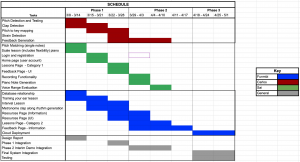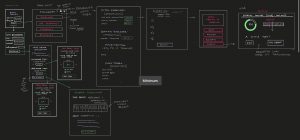This week, we continued to flesh out our project idea and research our respective components of the project. We have not had any major changes since, but we have considerably developed our ideas in preparation of the design review. This new schedule reflects the changes made to our project from last week and our new deadlines. We grouped our planning into three phases, the end of each stage signifying the start of integration between disjoint parts of the project.

The biggest risk that we face going forward is underestimating the time it will take to complete our respective tasks and integrate our parts into a system. To manage this risk, we have built-in slack time to our deadlines and given ourselves hopefully ample time to integrate. Also, as with any big project, we will be setting up version control via GitHub to mitigate issues where local changes introduce integration bugs and disrupt the project as a whole.
We also attached a wireframe of what the user will experience in using our app to guide us in ideation and in thinking about the corner cases and integration issues that we may have overlooked otherwise.

